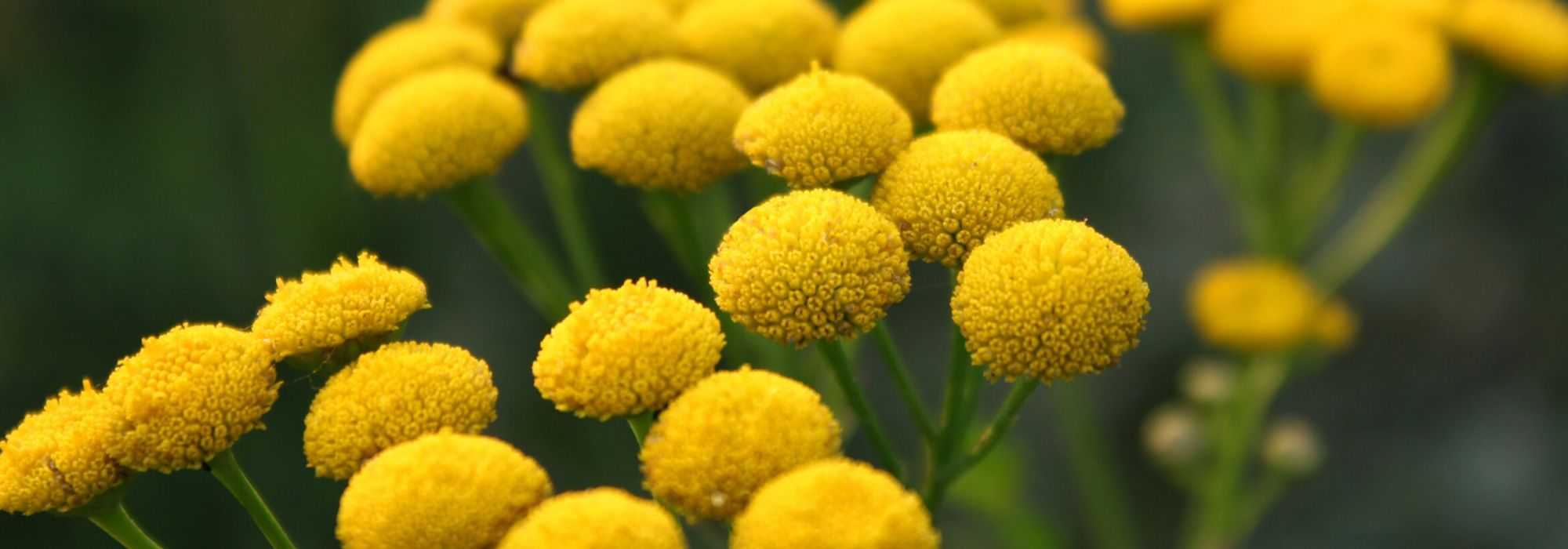
Tansy: sowing, planting, and growing
Contents
Tansy in a nutshell
- Tansy is a hardy herbaceous plant, with yellow flowers and finely dissected aromatic foliage.
- It has repellent and insecticidal properties, making it an excellent companion plant for the vegetable garden.
- It is often used in the form of manure to spray on plants that need protection.
- Hardy, it enjoys sunny conditions and well-drained, even fairly dry, soils.
- As decorative as it is aromatic, it is essential in both the vegetable garden and the ornamental garden.
A word from our expert
Decorative as well as aromatic, tansy is a valuable ally for gardeners. This perennial plant possesses insect-repelling, insecticidal, and fungicidal properties. It is very useful in the vegetable garden due to its natural repellent effect to ward off harmful insects and also helps combat downy mildew, rust, and cabbage fly. In manure or decoction, various preparations can be made from the leaves or flowers of tansy or the entire plant, whether fresh or dried.
Easily found in nature, this plant with a thousand and one virtues is present across a large part of our territory. While Tanacetum vulgare is undoubtedly the most well-known, essential oil extracted from annual tansy, also known as blue chamomile, is highly valued in phytotherapy and recognised for alleviating skin irritations.
From common tansy to golden tansy and crisped tansy, tansy offers a lovely sunny flowering in umbels of yellow flowers on finely divided and highly aromatic foliage from summer until deep autumn.
Hardy and low-maintenance, it requires little care once established in well-draining soil.
How to make a manure or decoction of tansy? When and how to cut and use its leaves, here’s everything you need to know about this beautiful and useful aromatic plant!
Description and Botany
“`html
Botanical data
- Latin name Tanacetum
- Family Asteraceae
- Common name Tansy, Mugwort, Wormwood
- Flowering July to September
- Height 0.60 to 1.50 m
- Exposure Sun, partial shade
- Soil type Rich and light
- Hardiness below -15°C
The Tansy, sometimes called pyrethrum, is a herbaceous perennial plant native from Eastern Europe to Siberia, belonging to the vast family of Asteraceae. This close relative of daisies and buttercups can be found wild along country paths, riverbanks, railway edges, or in meadows throughout France. In some countries, particularly the United States, tansy is considered an invasive weed.
The genus includes over 70 species, the most widespread being common tansy (Tanacetum vulgare). There are also other species such as Syrian tansy (Tanacetum haradjanii) and the cinereous-leaved tansy (Tanacetum cinerariifolium), from which pyrethrin, a plant insecticide, is extracted. Annual tansy (Tanacetum annuum), more resistant to arid conditions, is more commonly found in Mediterranean regions.
Tansy develops in dense clumps on running rhizomes, giving it a fairly vigorous growth: this plant spreads easily and can quickly colonise large areas. It also self-seeds spontaneously!
It produces stiff stems ranging from 0.50 to sometimes up to 1.50 m in height, bearing deciduous foliage. As deeply divided as that of some ferns, it consists of glandular, alternate leaves measuring 8 to 15 cm long, embracing, formed of 20 to 30 leaflets deeply divided with serrated edges. Crisped tansy (Tanacetum vulgare var. crispum) is distinguished by its highly ornamental foliage, curled like parsley. Usually glabrous on both sides, it is pubescent in the cinereous-leaved tansy (Tanacetum cinerariifolium).
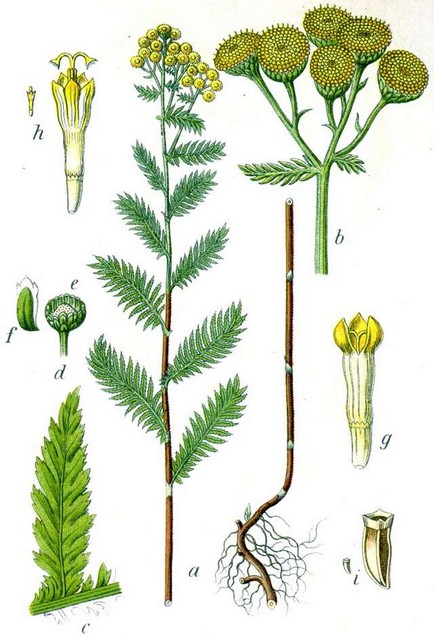
Tanacetum vulgare – botanical illustration
The foliage of tansies is powerfully aromatic when crushed, releasing a herbaceous, balsamic, and camphor-like scent, sometimes considered a bit acrid.
Dark green in common tansy, it takes on a lovely golden hue in Tanacetum vulgare ‘Isla Gold’, and a grey-white shade in Syrian tansy (Tanacetum haradjanii). Depending on the cultivars, it can also take on chartreuse green tones and sometimes even silver-speckled. The leaves, with a slightly lemony flavour, can be used fresh and finely chopped to flavour sweet or savoury dishes.
On this finely cut vegetation, a sunny flowering appears from July to September. At the ends of the rigid stems, the flowers of common tansy take the form of round heads measuring 0.7 to 1.2 cm in diameter, grouped in large flat, round, and fragrant corymbs. These small globular inflorescences, devoid of ligules and surrounded by short bracts, are formed of tightly packed florets resembling small golden buttons, similar to daisies.
This flowering is also strongly fragrant, revealing a scent with floral and fruity notes. It makes lovely fresh or dried country bouquets.
This flowering attracts pollinators all summer long, particularly bees, while repelling many insects (flies, Colorado beetles, ants, mosquitoes…) thanks to its aromatic active principles.
The fruits are small oblong achenes that disperse in spring.
Tansy is a hardy plant, tolerating temperatures down to -15°C, requiring little maintenance. Easy to cultivate, it grows in any well-drained soil, even poor or sandy. In terms of exposure, it prefers full sun but will tolerate light shade.
Tansy is an aromatic plant essential for the organic vegetable garden for preparing manure, in infusions or decoctions, as it possesses remarkable repellent, insecticidal, and fungicidal properties. In ornamental gardens, it will add height and lightness to country borders. A recognised medicinal plant, it is also used for its digestive and vermifuge properties. Monks used it to make Chartreuse.
“`
Main species and varieties
Most Popular
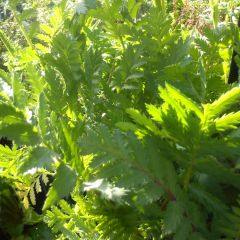
Tanacetum vulgare
- Flowering time August to October
- Height at maturity 80 cm
Our Favourite
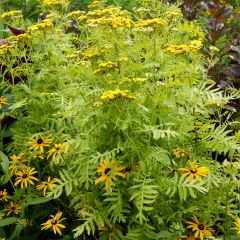
Tanacetum vulgare Isla Gold
- Flowering time August to November
- Height at maturity 50 cm
Discover other Tansy
View all →Available in 1 sizes
Available in 1 sizes
Available in 1 sizes
Planting
Where to plant tansy?
Hardy and able to withstand both cold (down to at least -15°C) and drought, tansy can be planted almost anywhere in our regions.
Install tansy in full sun if possible, or in partial shade, in a location sheltered from strong winds that could break its stems.
Easy to grow, it thrives in all types of well-drained soils, even calcareous or fairly dry ones. It requires very well-drained soil as it dislikes waterlogged ground in both summer and winter. It also does not appreciate very acidic soils.
Be sure to choose its location carefully, as this plant spreads through its rootstock and self-seeds. Give it enough space relative to neighbouring plants: it needs to be controlled unless you allow it a somewhat uncultivated area of the garden. Growing it in a pot is also possible to manage its rampant nature!
This plant, as decorative as it is repulsive, has great utility in the vegetable garden, orchard, and ornamental garden, where its light silhouette adds a rustic touch while keeping unwanted insects at bay.
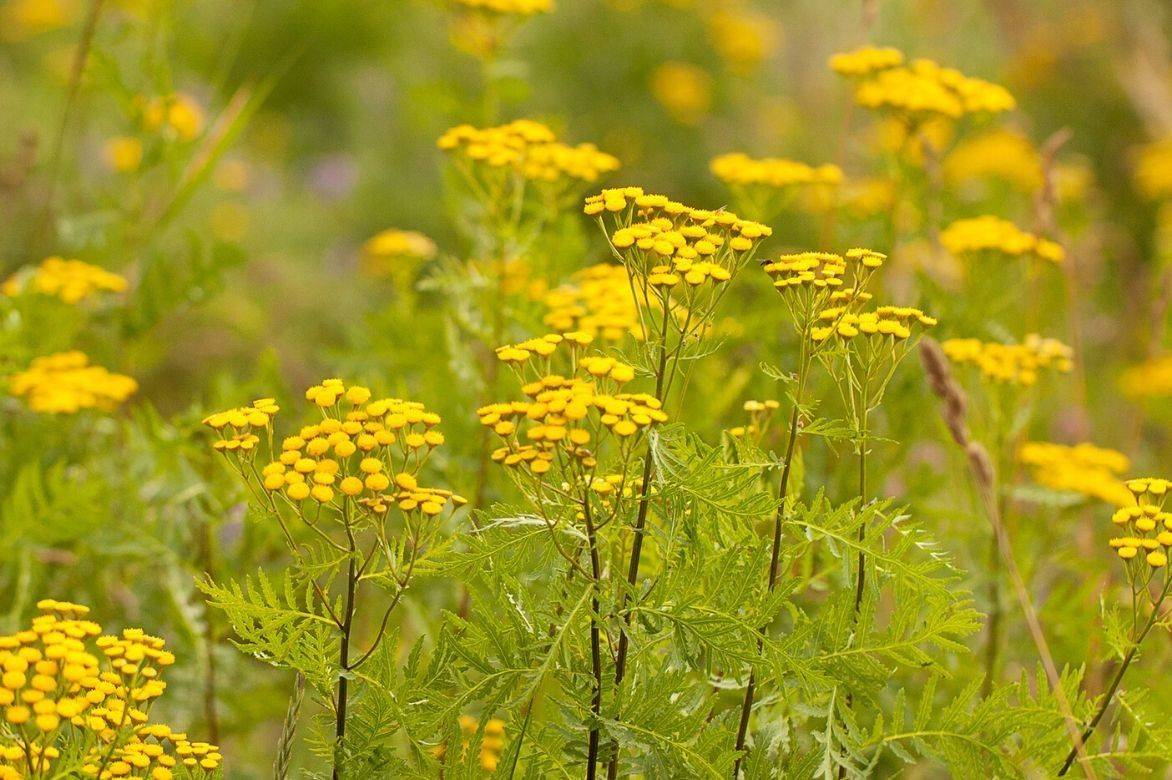
When to plant tansy?
Planting occurs in spring, from March to June, or in autumn, from September to October.
How to plant tansy?
In the ground
- Space the plants 50 cm apart in all directions.
- Dig a hole 3 to 4 times larger than the root ball.
- Loosen the soil well to aerate it.
- Spread a layer of gravel at the bottom of the hole.
- Place the root ball.
- Cover with fine soil.
- Firm down well and water.
In a pot
Tansy adapts very well to pot cultivation, especially if you wish to control its growth. The substrate must be sufficiently draining to avoid moisture around the roots.
- Spread a layer of gravel or clay balls at the bottom of the pot to aid drainage.
- Plant in a mix of potting soil and compost.
- Firm down and water.
Read also
Nettle manure: how to make it?When and how to sow tansy?
The Tansy seeds are sown from March to June for a harvest two months later. You can either sow directly in place or prepare young plants in a nursery or in pots, which will then be planted in their final position in the garden.
Sowing under cover
- In pots or in a seed tray, sow the Tansy seeds in good seed compost without burying them too deeply
- Lightly cover with compost
- Keep just moist until the seedlings emerge
- Transplant them into the garden when they are sufficiently developed
Direct sowing
- Prepare the soil
- Sow the seeds fairly spaced in rows spaced 50 centimetres apart
- Cover the seeds with compost and then firm down with the back of a rake
- Water gently and keep moist until emergence
- Thin out by keeping one young plant every 60 cm or so
For more tips on successfully sowing aromatic plants, check out our blog!
When and how to harvest Tansy?
The leaves of Tansy are harvested before flowering, as needed: simply cut the leafy stems. The flowers are picked in September. Tansy is used fresh like parsley or dried; in this case, store it in airtight jars. It is a toning and stimulating plant with digestive properties. The leaves are used in cooking to flavour salads, omelettes, desserts, puddings, liqueurs, or even braised meats.
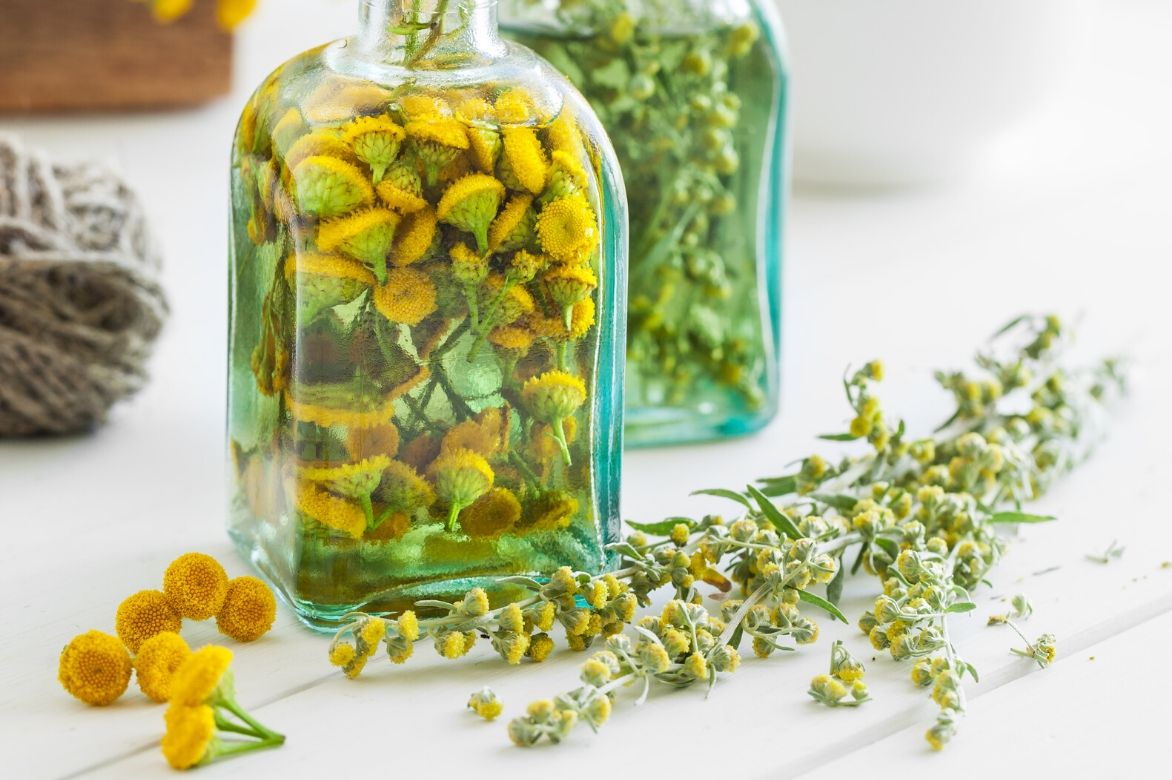
Recipe for Tansy Manure
The Tansy is renowned for its repellent effect, which naturally operates near sensitive plants and helps to ward off numerous insects and parasitic pests (cabbage root flies, aphids, ants, whiteflies, etc.) as well as diseases like downy mildew and rust due to its fungicidal properties. Its scent is also reputed to deter ticks, moths, and fleas. This is why it is a very useful plant in the vegetable garden, at home, and in ornamental gardens. It can be prepared as a maceration, infusion (30 g of flowers for 1 litre of water), manure, or decoction (250 ml of fresh plant in 1 litre of water) to enhance its remarkable insect-repelling, insecticidal, and fungicidal powers.
It is generally used as a spray on the aerial parts of your fruits, vegetables, or plants, and to water the bases of the crops you wish to protect from pest attacks.
How to make tansy manure?
- In a non-metallic container, either plastic or wood, place 2 kg of whole fresh tansy, chopped
- Cover with 10 litres of rainwater
- Leave to ferment in the sun for a few days
- Stir your manure daily
- When the small bubbles disappear, filter with a muslin cloth
- Dilute to 10% or 20%
Maintenance, pruning and care
The Tansy requires little maintenance. Watering is only necessary when the soil is dry, especially during periods of drought.
In pots, water more regularly while always allowing the substrate to dry out well between waterings.
After flowering, cut off the faded flowers. Regularly hoe and weed around the base.
In autumn, cut the clump back to ground level; it will regrow in spring.
It is not known to suffer from any diseases.
Tansy multiplication
The Tansy is easy to multiply by division in spring. This operation is recommended every 4 to 5 years to perpetuate the clumps in the garden.
- Dig up the clump using a spade
- Divide it by cutting the rootstocks into several pieces with a few stems and roots
- Only keep those on the periphery of the clump
- Replant each fragment immediately in a new location, after preparing the ground
Good companions for tansy
The tansy has repellent properties, making it a great ally in the vegetable garden. Plant it among carrots, cabbages, and onions as it deters the fly. Peas, spinach, salads, beans, and strawberries also appreciate its company.
With its finely cut leaves and sunny yellow umbel flowers, it brings a lot of lightness and brightness to natural gardens or contemporary prairies, where it will naturally find its place alongside airy flowering perennials like Angelica and fennel.
In a yellow-toned mass, it will be accompanied by yarrow, dyeing chamomiles, or Helianthus with some clumps of wormwoods featuring beautiful silvery-grey foliage (Artemisia ‘Powis Castle’, Ludoviciana wormwood ‘Silver Queen’) or fireweeds.
Get inspired with our guide “Aromatic Plants: 5 Great Ways to Integrate Them into the Garden”!
Useful resources
- Discover our ideas for associating tansy in the garden
- Discover the medicinal properties of tansy
- Find a wealth of practical advice in our ‘vegetable garden’ sections: “Sowing aromatic plants“, “Crop rotation“, “Raised vegetable garden” or “Permaculture and vegetable garden“
- We also offer a beautiful range of aromatic plants that can be easily planted in the garden and even in pots on a balcony or terrace
- Subscribe!
- Contents
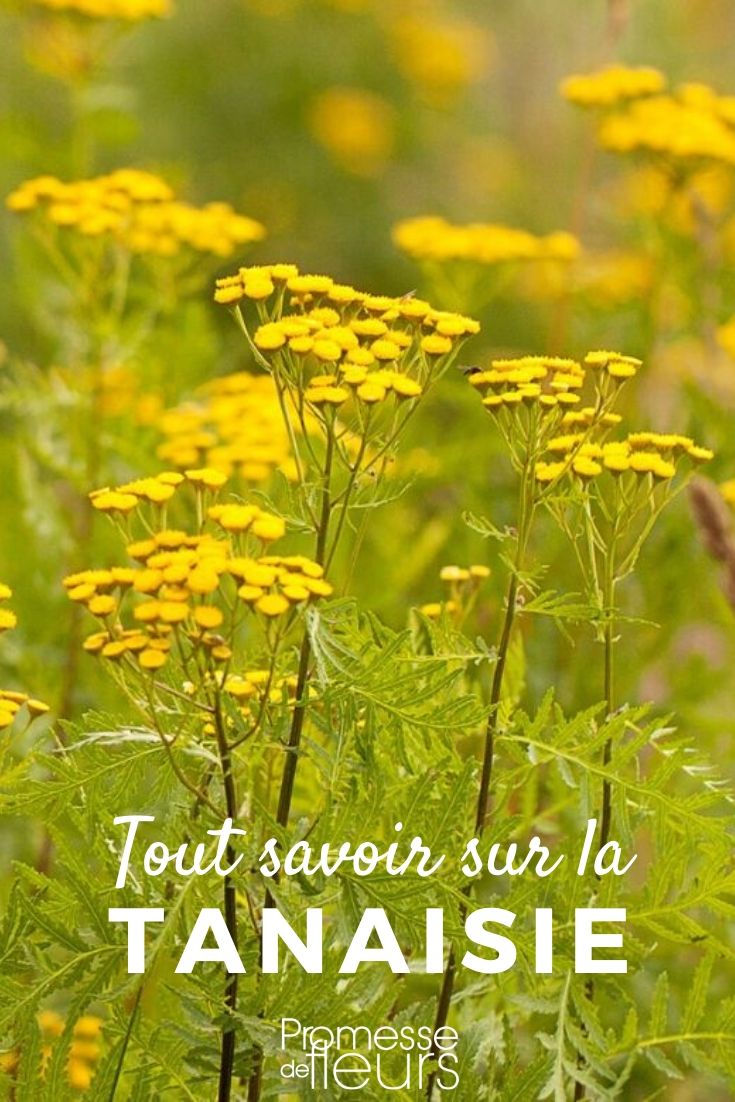
































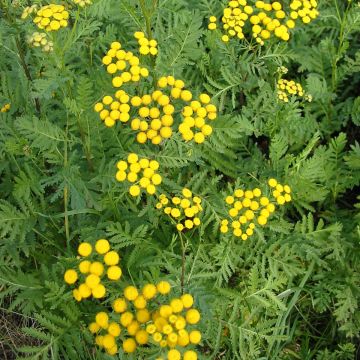

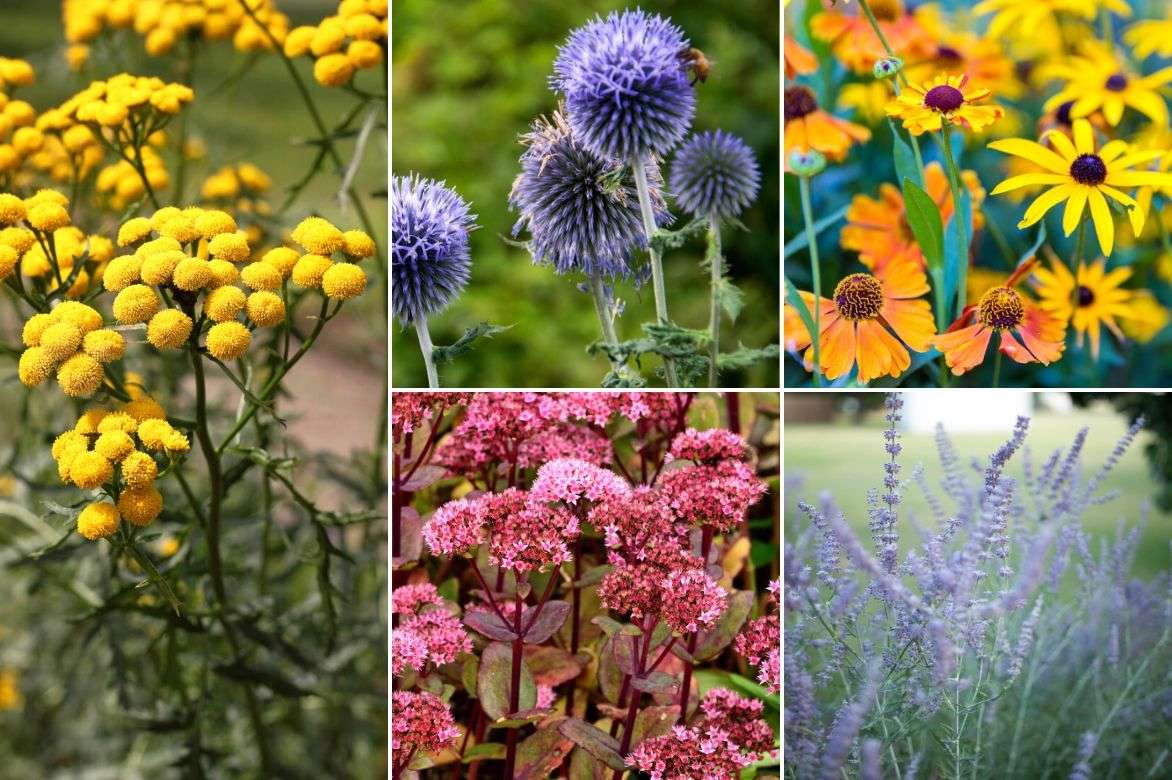
Comments